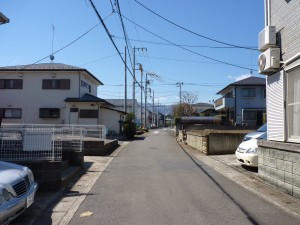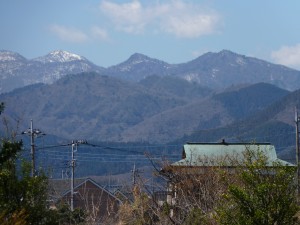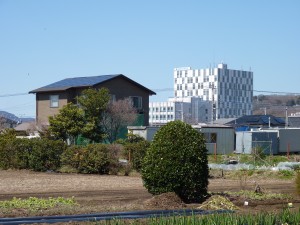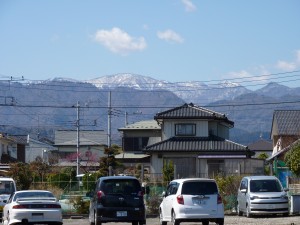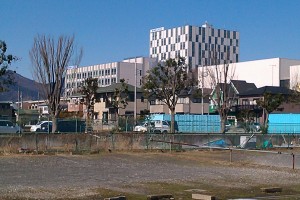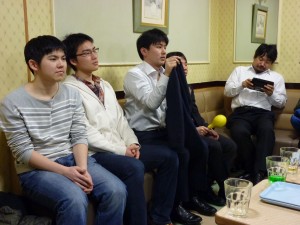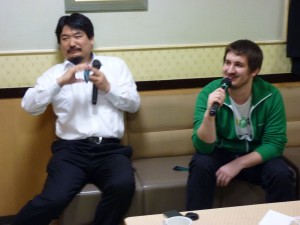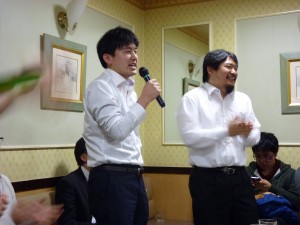Exhibition at Yokohama
On June 14th 2014, Shirai-lab of KAIT along with many other KAIT labs prepared and exhibited at the Yokohama Youth Center. There on the third floor the Shirai-lab exhibited our ExPixel, Manga Generator, and two new projects (a projection project where user can change the image projected onto a transparent globe with hand .
The preparation of the exhibition took place on June 13th on Friday when six of the lab members including me went to Yokohama Youth Center to set up the hard and softwares for the exhibition. There I worked with the Manga Generator team to set up Kinect, projector, projection screen, and laptops. I also took part in setting up the race tracks for the racing game. The six of us worked from noon till seven and left with everything setup and running. By then the youth center has been closed for almost an hour and the manager had to “escort” us out of the youth center.
On Sunday the entire Shirai-lab arrived at Yokohama Youth Center at around 8:30 AM and began setting up and finalizing program settings. From 10:00 till 3:00 we entertained dozens of guests, most of them families with parents and children. It is here that I was able to test out how the new comic stipe I made for Manga Generator played for the children, and most are pretty happy about it. During the middle of the exhibition the Kinect we used malfunctioned temporarily and for a time players cannot see their image on the screen, causing some panels to appear without the players in them. This proved to be a bit embarrassing but the problem was quickly fixed.
I did found out during the exhibition that the selection icon of stories matters a lot and that more exciting looking icons are clicked more often. Stories containing giant monsters, let it be robots or mutated animals, tend to attract more kids too. I am not sure if this is due to Japanese’s interest in giant monsters such as Godzilla or Gundam, but in the future we should put questionnaires asking why do people choose to play the story they chose and what kinds of stories do they want to see.
After the exhibition, Shirai-lab members went to walk around Yokohama docks and kill time before the group dinner at an Italian restaurant. Afterwards we went to an outdoor exhibition place built in the shape of ancient Rome colosseum where we watched a 3D projection screening. In this screening, the projected image moves in a way that makes it seem as if the bricks of the colosseum is shifting and relocating themselves to form different kinds of shapes. Portals would open in the colosseum and at one time the colosseum appeared to be underwater. What this 3D projection screening did so successfully is that it is able to completely focus the audience’s attention on the subject matter shown at the moment and all images fits perfectly into the colosseum. No where does the shape and outline of bricks in the colosseum goes against the image being projected and the whole presentation is a coherent master piece.
NHK Research Lab Visit
On May 29th, 2014, part of the Shirai-lab visited the NHK exhibition in NHK research lab in Tokyo. It also turns out that Shirai-sensei used to work on the fifth floor of the research lab. The guests are only able to visit the first floor and basement (they converted the parking lot into exhibition space) of the building.
The exhibition shows the lists of researches NHK branches and related companies are working on. The topics exhibited in the exhibition include new types of cameras, TV screens, audio system, cable system, underwater signal transition system, TV program navigation system, and animation/audio synthesis system. One such research named “Underwater Visible Light Wireless IP Transmission Technology” allows the live broadcast of visual image from cameras held by scuba divers to receivers on the surface using visible light signals. I was also able to see the evolution of live broadcasting cameras from 2002 to 2014 and how 32 kg bulky 2002 era cameras evolved into 2kg cameras in 2014. The 8k Super Hi-Vision televisions is another high-light of the show, which shows great improvements definition wise especially when compared to the 2k HD televisions commonly seem nowadays. These 8k Super Hi-Vision televisions can even show snow particles and scratches on ice surface during ice-skating competitions clearly.
Emperor’s Palace and Diet Building
On Saturday May 17th, 2014, I went to Emperor’s Palace in Tokyo for the second time. This time instead of roaming around the Emperor’s royal garden until closure time (royal garden closes at 16:30 and stops receiving new guests at 16:00), I tried to go into the actual palace but later found out that outsiders do not have access to the palace and the royal garden is as far as any visitor can get.
I did walk around the Palace however and found out that the Emperor’s garden and palace are all situated on a small man made island and is surrounded by a moat and stone walls, much like the Nagoya Castle in Nagoya except the emperor’s palace is situated on an even larger island. Right outside of the moat is a sidewalk and other parks.
While walking around the palace, I also found out that the prime minister’s office, diet building, diet library, diet museum, and British foreign affairs office are right around the palace, making the area dense with various governmental buildings. While inside the diet library I also obtained the user’s registration card as a trophy. The registration card lasts for three years and with it one can enter and borrow books from the diet library.
Sagamihara City Museum Trip
On April 29th, the entire Shirai-lab members journeyed to Sagamihara City Museum to help facilitate a photography workshop for young children led by Shirai-sensei and his friend 阿部さん . The Shirai-lab students functioned as assistants for sensei who solved on-sight technical problems as well as taught the kids various photography techniques.
I departed my apartment at around 8:00 AM and took the Odakyu line from Hon-Atsugi station to Sagamiono station and from there switched to the Sagami 02 bus at the northern exit to the 宇宙科学研究所本部 bus stop and then walked to the museum. I got lost two times during this trip however, first time in Sagamiono station where I had a hard time locating the bus stop for Sagami 02 and second time at 宇宙科学研究所本部 bus stop where I did not know how to walk to the museum. Eventually I found a road sign that told me the direction to the museum and was able to join my fellow lab-mates despite of being late.
Once I arrived at the museum, the entire Shirai-lab team went around the museum taking photos of exhibitions and we filled out a sheep of questionnaires that asked us about our favorite exhibition and best photograph. Later I found out that the kids we were supposed to lead went through the same exercise we just did, so I guess the photo-taking trip functioned as a warm up for the assistants.
In the afternoon the Shirai-lab members took the children and their mothers (yes we saw no dads) to take photos around the museum and then discussed about different camera techniques. I did not aid any kids however, because my Japanese wasn’t good enough to explain the complicated art of photography. Instead I listened to Shirai-sensei and his friends discussing about photography while occasionally dozing off on my seat from the lack of sleep last night (which was caused by my excitement to visit my first ever Japanese museum).
I, Hisataka, and Taguchi left the museum at around five while Ogawa, Kunitomi and Shirai-sensei stayed behind to talk to the museum staff. Later I found out that those who stayed behind had roasted pork for dinner, much to my dismay and jealousy as I ate convenient store food that day.
April 26-27 Amyu Exhibition
From April 26-27 (Saturday-Sunday), 2014, the various labs from the information technology department of Kanagawa Institute of Technology as well as many other companies held a joint exhibition in the Amyu department store near Hon-Atsugi. The exhibition occupied four floors in Amyu starting from the fifth floor and ended on the eighth floor. The KAIT labs were stationed in room 604 on the sixth floor and our exhibition was titled “The Future Gaming Center”. Our supervising professors were Shirai-sensei and Nakamura-sensei while the student in charge of “The Future Gaming Center” exhibition was Ogawa Kosaku, a friend of mine and a fourth year student at Shirai-lab.
KAIT exhibited a total of seven games, including FamiLink TV and Manga Generator from Shirai-lab, アオモリズム, ワットラットラッシュ, はげピッ!ピッ!, “頭”を使って暗算トレーニング!, Let’s SPANKING!!」, and リキシトール. FamiLink TV is the multi-imaging project that I worked from early Feburary till late March and was shown previously in the KAIT Hon-Atsugi Exhibition roughly two months ago as well as the Laval Virtual Conference in France in April. This project lets people do a variety of things such as watching a movie and playing a game on a single television screen at the same time without splitting the screen. Manga Generator is the project I am currently working on that allows the user to act out various manga scenarios as the protagonist in the story. アオモリズム is a rhythm game about a fight between Hokaido and Aomori state in Japan. ワットラットラッシュ puts the player into the shoes of a mouse roaming around the living room. “頭”を使って暗算トレーニング! lets the player play the role of a cashier counting the exact price of bald middle aged man in shopping carts. Let’s SPANKING!! is yet another rhythm game that encourages people to do exercise by having them tap their head, shoulders, knees, or toes instead of regular gamepad buttons. This game is actually very close to a Building Virtual World project I did a year ago where the player also taps their body parts in a rhythm game. Last but not least is ツッパリで迫りくる障害物を吹っ飛ばせ!, a first person beat them up rhythm game where the player plays as a sumo who has to beat his way through a crowded street to the sumo stadium.
I am very impressed with the dedication of my labmates who were willing to come here during the weekends at 9:00 AM on both days to set up the exhibition and stayed until the exhibition was over. I was not required to come to the exhibitions at nine and only came at 1:00 pm on both dates and on top of that, I did not have to stay in room 604 the entire time and was allowed to go look at other exhibitions. My labmates demonstrated extreme patience with people and many times even acted as guidance for young children in the Manga Generator project where youngsters do not know that they have to remain stationary for the camera to take their pictures and have their image ingrained into the manga. On numerous occasions my labmates even gave hints to children as to what poses they should make in different scenarios.
Some other exhibitions I saw include a robot dancing exhibition where robots dance to different songs, ikebana (flower arrangement), Ukiyo-e (pictures of the floating world), sculptures made by children living in places struck by the 2012 tsunami with their household items, a western painting exhibition done by an old Japanese painter who lived to 100 years old and passed away on 2012, a Japanese spinning top battle (where people put two tops inside a small arena and the first one to got knocked off balance loses), as well as a robotic exhibition from Tokyo Polytechnic University featuring a maze solving robot and a soccer shooting bot. I am amazed by the stuff I saw in different exhibitions to say the least, as this is the first time for me to see dancing robots, spinning top battle, and a complete Ukiyo-e exhibition.
At the end of April 26th, all KAIT students who exhibited in Amyu gathered in a pizza shop in the basement of Amyu to celebrate the success of our first day. On Sunday after the exhibition was officially over, we packed up all of our equipment and put them into a truck that took them back to KAIT. I and Shirai-sensei as well as dozens of other students also went back to KAIT carry the equipment from the truck back to their respective laboratories. We had a short party afterwards on the fifth floor of K1 where people drank beer and ate snacks before parting their ways.
Overall the exhibition was a huge success and we got 1313 visitors on Saturday April 27 and 1259 visitors on Sunday April 28, which adds up to a total of 2572 visitors.
Japan Vending Machines, Toilets, and Convenient Stores
I will be talking about the vending machines, toilets, and convenient stores in Japan in this blog. While this may seemed like a weird combination, these three elements are some of the first things one will notice when arriving in Japan.
Japan is literally filled with vending machines and one can find two or three of these machines on a single block. Most of the vending machines sell hot and cold drinks (cold drinks are marked by a blue label underneath the product display and hot drinks marked by a red label) while some other machines sell ice creams or cigarettes. When I first arrived at Japan around January 22nd, I was very sick and actually got better by buying hot drinks from these machines. All vending machines have a recycle bin right next to them, which is a very convenient and environmental friendly design as it discourages people from throwing empty cans onto the streets.
The toilets in Japan are unlike any other toilets one will come across, in that most of them contain heated seats, meaning one does not get one’s butt cold in winter when sitting on a toilet. As far as I know all of the toilet seats in Kanagawa institute of Japan have heated seats and even the toilets in some convenient stores have them (yes convenient stores have restrooms for people to use in Japan) have heated seats. I have to admit that I enjoyed sitting on toilets a bit too much when I first came here during winter. So please give these lovely seats a try if one ever comes here, for these toilet seats are sure to warm your heart from your butt.
Last but not the least are the 24 hour convenient stores in Japan. Much like the vending machines, the convenient stores are a big part of life in Japan in that one not only buys goods such as snacks, drinks, tobacco, and manga from them, one also pays rent and all kinds of bills in these places. Need to pay the gas bill or electricity bill? Just take the bill to the convenient store and pay the clerks money and you are all set. The convenient stores also have microwaves and boiling water that one can use to heat up one’s ramen or bento (but only for those who purchased the bento and ramen from the shop). Lastly these chain stores also provide wireless network service for customers who have purchased wireless network plans from the store.
Atsugi City
Today I am going to be blogging about the city Atsugi and Kanagawa Institute of Technology
Atsugi city is a medium sized semi-rural city in Kanagawa ken, Kanto region Japan. It is a city surrounded by mountains and you will be seeing chains of mountain pretty much wherever you go. The city center is called Hon-Atsugi Station and there one can take the train to Tokyo, Yokohama, Kamakura..etc. It is also in the train station where one can buy cards which one can use to pay transportation fees.
I live in the Sanda region of Atsugi, which is about 25 minutes north of Hon-Atsugi by bus (takes a bit more than an hour to walk there from my place). Roughly 1.9 kilometer North of my place is the Kanagawa Institute of Technology (KAIT). This school was founded in 1963 first as a vocational school and in 1975 became a university. I am currently working in Shirai-lab, which is located on the fifth floor of K1, the tallest building on campus.
Below are a series of photos around my place and KAIT. The tallest white building is K1.
KAIT Graduation
On March 22, 2014 Saturday, college seniors and last year master/Ph.d students of KAIT officially graduated. We at Shirai-lab had a small celebration where students were handed graduation documents by Shirai-sensei and afterwards everyone had a small party/chat telling everyone their plans afterwards. Shirai-sensei also drew each of the graduates a small portrait. Yannick, the French master student doing an intern at Shirai-lab also brought two presents from France for everyone to enjoy.
At night 15 students of Shirai lab, including the sensei went to a Karaoke bar near Tsumada and partied/sang for the entire night. Me, Yannick, Kosaku, and sensei as well as two other student stayed until around 10:30 before we went home.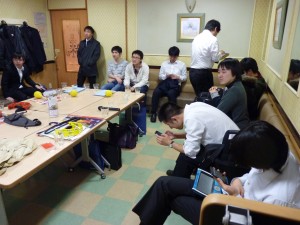
March 08, 2014 Progress Report
Things I have done this week revolve mainly around the haystack/oil barrel corner in the world. I built and textured the haystack, tractor, tank, and oil barrels. I believe the two players’ cars are also done this week on Monday.
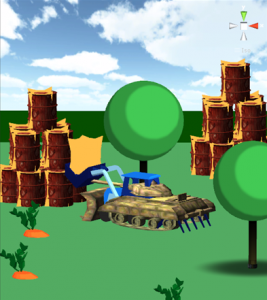
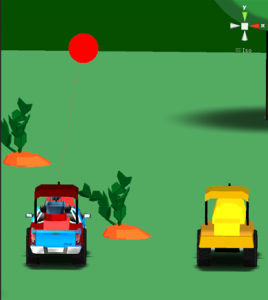
Aside from the things done, I have also learned how to import 3d models and textures into the game, how to create material, as well as the various folders and files in unity, who spent time to teach me how to do things and watch me as I try to update any changes.
Things we are still missing include possibly audio for the game, although it is rather hard if we want to watch the movie and play games with audio on at the same time, which will create confusion to the movie watcher who hears game sounds that come out of nowhere. Our team has also not calculated the amount of time need to be spent in the game or a timer to encourage people to move faster, and the game lacks a solid ending overall.
Some of the challenges we face include how to use the limited amount of time we have, which is only one week, to get as much stuff done as possible and I also need to calculate how much 3d models and decorations I can do. Although Laval Virtual is still three weeks away, Yannick is actually already done with his contract in KAIT and is spending his free time coming to KAIT to work voluntarily.
Next week with Yannick being gone our team will change into a Rex only team for the most part, and although I do want to make the world richer by myself, me and Yannick are hesitant to make major changes because of the lack of a programmer.
